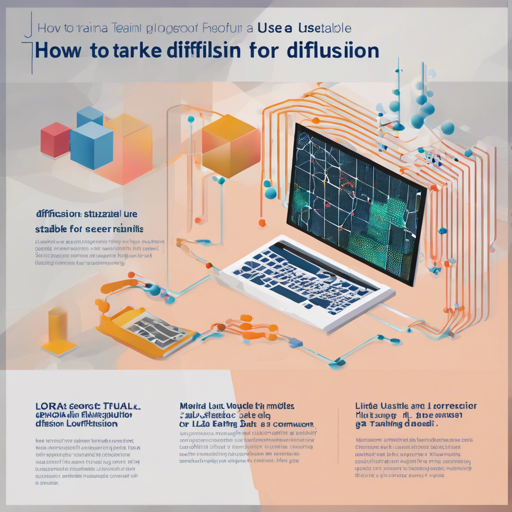Have you ever dreamed of generating stunning visual artwork from textual descriptions? With advancements in AI, specifically with models like LoRA derived from black-forest-labs/FLUX.1-dev, the task has become remarkably accessible. In this article, we’ll walk you through the steps to train and use a LoRA model, so you can start creating impressive images from simple prompts.
What is LoRA?
LoRA, or Low-Rank Adaptation, is a technique used to fine-tune pre-trained models effectively while retaining their original capabilities. Think of it like adding a new layer of paint to a masterpiece: the original artwork remains intact, but now it features new colors and textures that enhance it.
Training Your LoRA Model
Before diving into generating images, it’s essential to understand how to train your LoRA model effectively. Let’s break down the training settings:
- Training Epochs: 95 – This defines how many times the model will see the entire dataset during training.
- Training Steps: 2000 – The total number of updates for the model weights.
- Learning Rate: 0.0001 – The rate at which the model learns; too high can cause it to overshoot, too low makes for slow learning.
- Batch Size: 1 – Refers to the number of training examples utilized in one iteration.
- Number of GPUs: 1 – The capacity for using GPU processing power to accelerate training.
Inference: Generate Stunning Images
Once your model is trained, it is time to use it for inference. Here’s how you can do it:
- Import the necessary libraries such as
torchandDiffusionPipeline. - Load your trained model and specifications.
- Input your prompt along with any negative prompts to influence the desired output.
- Set your necessary parameters like
num_inference_stepsandguidance_scale.
Sample Code for Inference
import torch
from diffusers import DiffusionPipeline
model_id = 'black-forest-labs/FLUX.1-dev'
adapter_id = 'flux_Training'
pipeline = DiffusionPipeline.from_pretrained(model_id)
pipeline.load_lora_weights(adapter_id)
prompt = "a girl portrait by ohwx style"
negative_prompt = "blurry, cropped, ugly"
pipeline.to('cuda' if torch.cuda.is_available() else 'mps' if torch.backends.mps.is_available() else 'cpu')
image = pipeline(
prompt=prompt,
negative_prompt=negative_prompt,
num_inference_steps=20,
generator=torch.Generator(device='cuda' if torch.cuda.is_available() else 'mps' if torch.backends.mps.is_available() else 'cpu').manual_seed(1641421826),
width=1152,
height=768,
guidance_scale=3.5,
guidance_rescale=0.0,
).images[0]
image.save("output.png", format="PNG")Troubleshooting Common Issues
Even with the best of intentions, you may encounter challenges while training your model or generating images. Here are some troubleshooting tips:
- Image Quality Poor: Ensure your prompts are well-defined and the negative prompts are appropriate.
- Training Takes Too Long: Adjust the
batch sizeor reduce thenumber of stepsfor a faster training process. - Memory Errors: Reduce the
resolutionof images being processed or use a larger GPU. - For more insights, updates, or to collaborate on AI development projects, stay connected with fxis.ai.
Conclusion
Training and using a LoRA model like black-forest-labs/FLUX.1-dev can open the door to creative possibilities within the realm of AI-generated art. By following the guidelines outlined in this article, coupled with the creativity of your prompts, you can produce captivating images. At fxis.ai, we believe that such advancements are crucial for the future of AI, as they enable more comprehensive and effective solutions. Our team is continually exploring new methodologies to push the envelope in artificial intelligence, ensuring that our clients benefit from the latest technological innovations.

